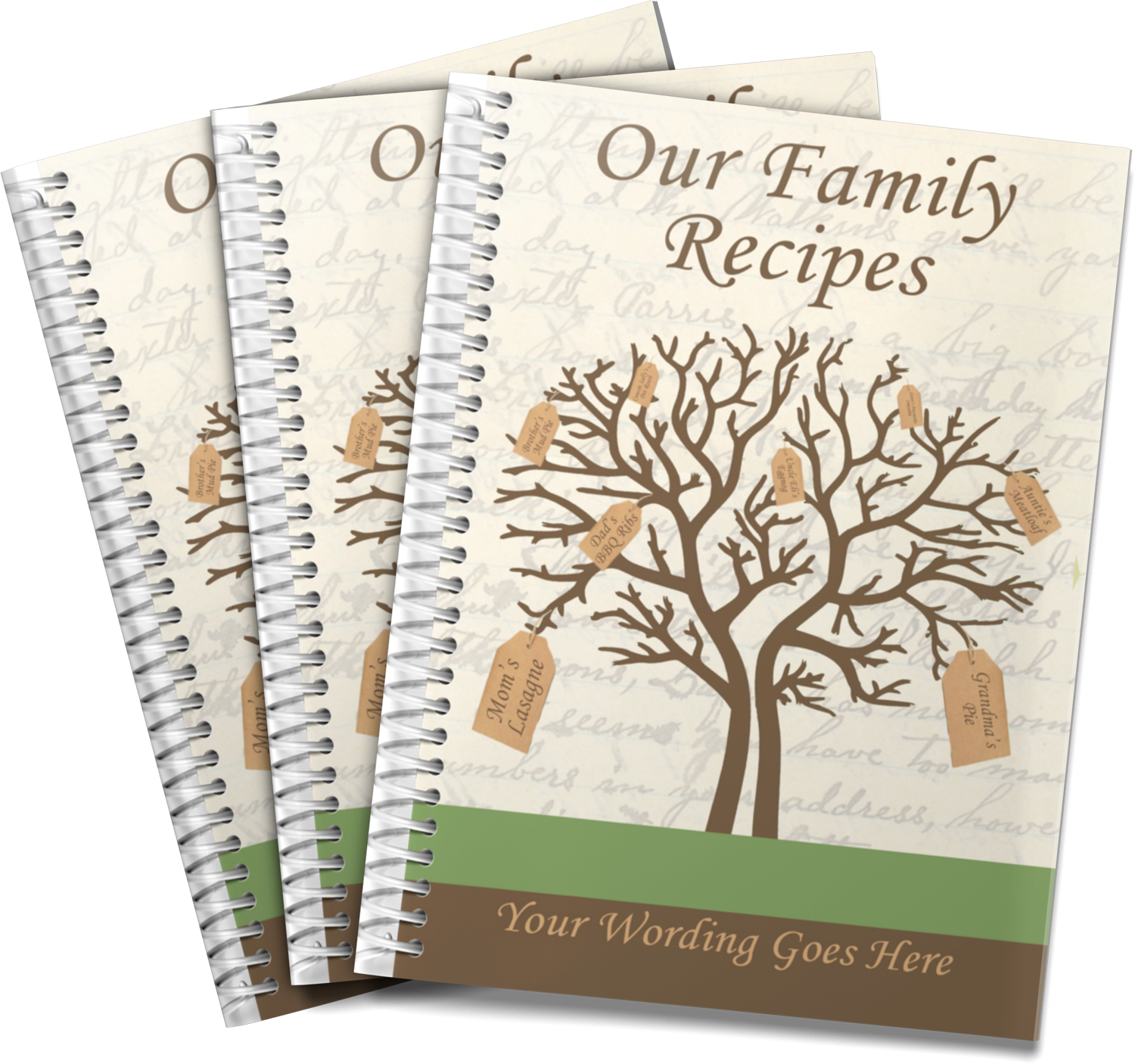
A lifetime of feeding our families can generate a wealth of tried and true family recipes. The recipes that everyone loves at holiday gatherings and the everyday meals that we used to feed our kids. All of them are special and need to be written down for future generations.
In years past, our mothers and grandmothers used recipe boxes and index cards to keep track of their recipes if they ever bothered to write them down. Unfortunately if someone wanted a recipe, someone would have to find the recipe card, and hand write a new copy so that recipe can be shared.
Today, computers and the power of the Internet allow us to create online cookbooks that can be printed and easily shared with friends and family members.
A family cookbook allows us to choose which recipes were most important to us and tell the story behind the recipe. Which holidays was it used for, how did you get the recipe, who’s favorite recipe was it.
Recipes are not just a set of instructions, The best recipes tell the story of the food and the family behind it.
Here are some tips for starting your own family cookbook from Family Cookbook Project.
Get others involved – Everyone in the family has their favorites, so ask them which recipes they would like included. You can even invite them to contribute and enter those recipes directly into the program to save you time and effort.
Set a deadline – Everyone is busy and will wait until the last minute to contribute recipes. That is why setting a deadline at least a month into the future is a good idea. That way people have something to shoot for and give you a reason to contact them to remind them that recipes are due.
Select a cover that stands out – People will judge this cookbook by it’s cover so make sure it reflects your family’s personality. You can include a photo or pick a design that is meaningful to yourself and the family.
Include photos – Photos make a cookbook come alive. Showing images of family members, past and present, helps put the family in a family cookbook.
Read the recipes – As editor, it is your responsibility to check the recipes for typos and completeness. If a recipe lists an ingredient, make sure it has an amount and is included in the directions as well.
Print extra copies – Ask all of the family members if they want a cookbook before placing your print order (or give them as gifts for the holidays), but be sure to order a few extra copies. Once people see the physical cookbook, it’s amazing how many additional people will want a copy.
A family cookbook is a rewarding project that brings a family together and is a reminder of one of the important elements that help bind us together – memories of family meals, the food that was served and the people who made them.
Bill Rice is Founder and Co-Publisher of the Great Family Cookbook Project, a website that helps families and individuals collect, preserve and share food memories by creating their own printed personal cookbooks. He is the author of The Wellfleet Oyster Cookbook and the Cape Cod Cocktail Cookbook (Available on Amazon), both created using FamilyCookbookProject.com. He is also editor of the Donovan Family Cookbook, now it’s third printing and is an avid genealogist tracing his family back to the 1600’s.
Follow Family Cookbook Project on Facebook, Instagram, Twitter and Pinterest!

